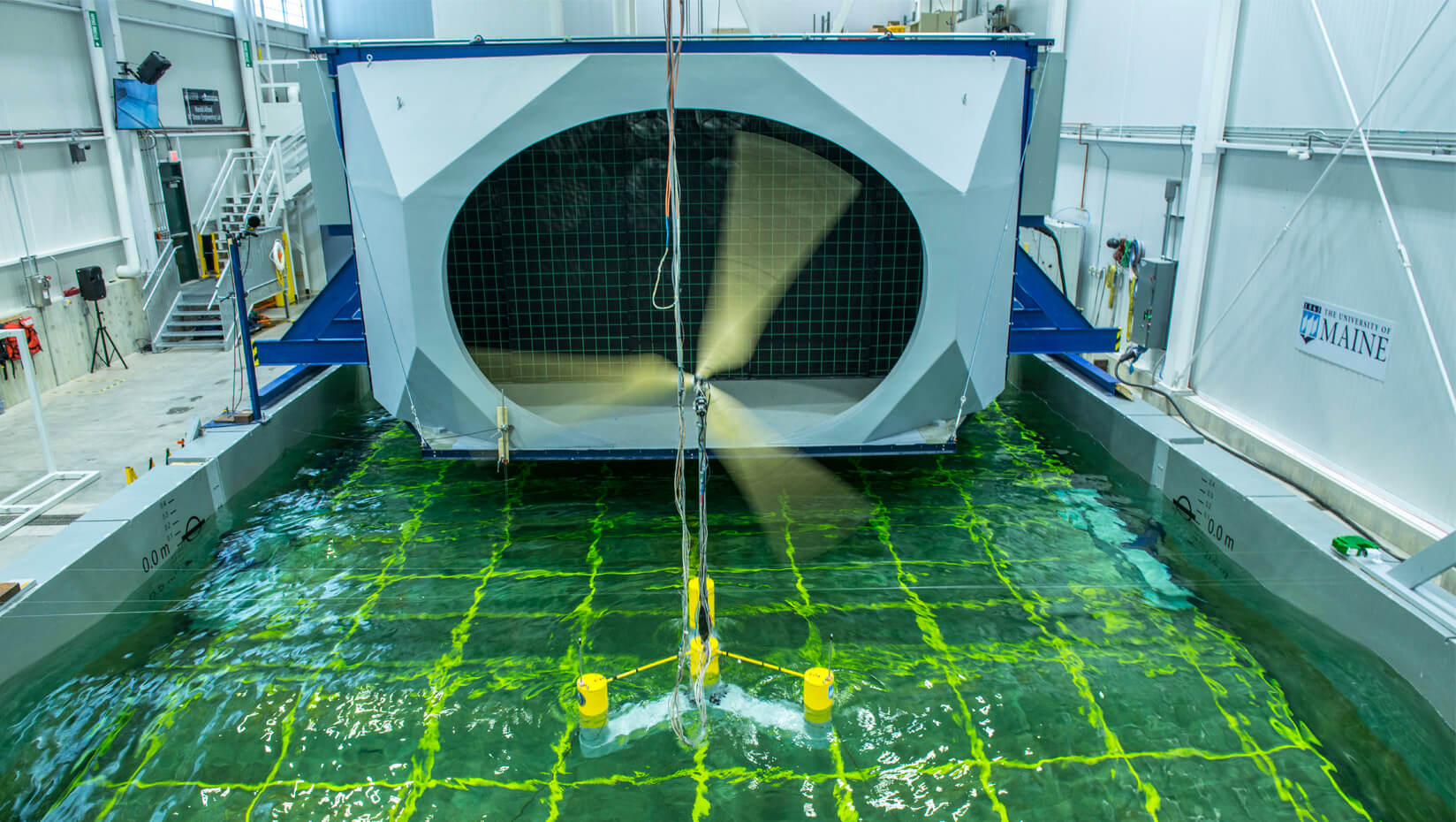
UMaine awarded nearly $1.4 million for transformational floating offshore wind energy technology
The University of Maine Advanced Structures and Composites Center (UMaine Composites Center) has been awarded nearly $1.4 million from the U.S. Department of Energy’s Advanced Research Projects Agency-Energy (ARPA-E) program, and will collaborate on a more than $1.5 million award to the National Renewable Energy Laboratory, both focused on research related to transformational floating offshore wind energy technology.
UMaine received a highly competitive $1,398,202 award from ARPA-E to design an ultra-lightweight, corrosion-resistant, concrete floating offshore wind turbine (FOWT), equipped with NASA motion mitigation technology, originally developed to reduce vibrations in rockets.
In addition, the UMaine Composites Center is a key collaborator in another $1,529,923 ARPA-E award working with the National Renewable Energy Laboratory (NREL) to validate new, optimized designs for floating offshore wind.
“We are very appreciative that ARPA-E has selected UMaine for these very highly competitive awards,” says Habib Dagher, executive director of the UMaine Composites Center. “With this funding, we plan to further stabilize our floating wind turbine hull technology in extreme storms by integrating NASA rocket vibration suppression technology into the design. This will help lighten the hull and further decrease our already very low electricity costs. This work builds on our 12 years of experience in floating wind technology, and provides a whole new direction that could further revolutionize the design.”
UMaine has adapted the NASA technology to counteract FOWT motions, leading to lighter platforms, increased turbine performance, and a lower levelized cost of energy (LCOE). The proposal will take a radical next step in the field of offshore wind, while building on UMaine’s experience in successfully designing and deploying the first grid-connected floating offshore wind turbine in the U.S. The proposed technology is a departure from current floating concepts and achieves a significant LCOE reduction, even when using standard wind turbine architectures.
“This program will leverage the unique design, numerical modeling and scale model testing expertise located at the UMaine Harold Alfond W2 Ocean Engineering Laboratory to significantly advance this concept and offer a cost-competitive solution to industry,” says Anthony Viselli, manager of offshore design and testing at the UMaine Composites Center.
In collaboration with UMaine, NREL will develop and execute the Floating Offshore-wind and Controls Advanced Laboratory (FOCAL) experimental program. The project’s goal is to generate the first public FOWT scale-model data set to include advanced turbine controls, floating hull load mitigation technology, and hull flexibility.
Current FOWT numerical tools require new capabilities to adequately capture advanced designs based upon control co-design methods. The FOCAL experimental program will generate critical data sets to validate these capabilities from four 1:60-scale, 15-MW (megawatt) FOWT model-scale experimental campaigns in the UMaine Harold Alfond W2 Ocean Engineering Laboratory. The experiments will generate data for FOWT loads, motion and performance, while operating with advanced turbine and platform controls in realistic wind and waves.
The UMaine Composites Center received the competitive awards from ARPA-E’s Aerodynamic Turbines Lighter and Afloat with Nautical Technologies and Integrated Servo-control (ATLANTIS) program, which seeks to develop radically new FOWTs by maximizing their rotor-area-to-total-weight ratio while maintaining or ideally increasing turbine generation efficiency; build a new generation of computer tools to facilitate FOWT design; and collect real data from full- and lab-scale experiments to validate the FOWT designs and computer tools.
Contact: Meghan Collins, 207.581.2117, mc@maine.edu
